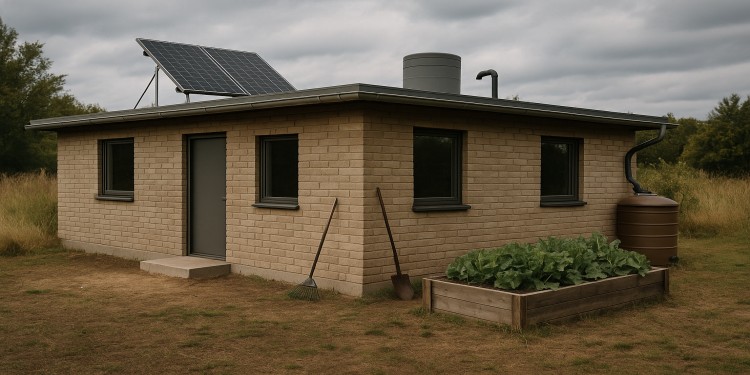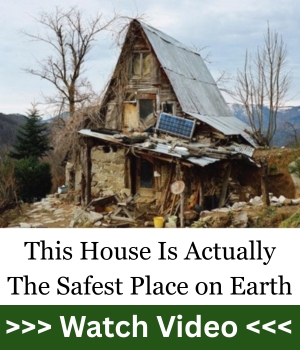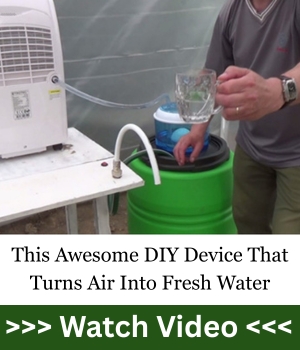When most folks in the Southern U.S. think about roofs, they imagine the classic pitched roof—the kind every suburban neighborhood is littered with. Sloped, angular, textbook “American Dream.” But if you’re a prepper, you already know appearances don’t matter nearly as much as utility, resilience, and adaptability. And here’s the twist that will make your neighbors shake their heads: the roof that works best for survival and long-term independence in the South isn’t pitched at all. It’s flat.
Think about it this way—your home isn’t just a shelter, it’s your fortress. The decisions you make today about design and function dictate how well you ride out a crisis tomorrow. Most people build to blend in or to please their HOA. Preppers build to survive. That means asking uncomfortable questions: Can my roof help me collect water when the city shuts down? Can it support solar when the power grid collapses? Will it hold up when a Category 4 storm tears through the Gulf? If you’re relying on a conventional pitched roof, the answer is usually no.
That’s why this conversation matters. Prepping isn’t about following tradition—it’s about looking where everyone else refuses to. And once you start comparing, the choice becomes less about “what looks normal” and more about “what keeps me alive.”
The Pitched Roof Mirage
Let’s start with the obvious. Pitched roofs shed water faster, they look “normal,” and contractors love them because they’re the default design in the building industry. But think like a prepper for a second. That slope you’re paying extra for eats up usable space, complicates repairs, and makes every inspection a dangerous climb. Try setting up rainwater catchment or solar panels on a steep pitch—you’ll quickly learn you’re trading safety for aesthetics. And in hurricane season, those big slopes catch the wind like sails, sometimes ripping off entire sections in one storm.
Even the arguments in favor of pitched roofs are weaker than most people realize. Yes, they shed rain, but in the Southern U.S., you’re not fighting snow loads—you’re fighting blistering sun and wind. That slope doesn’t protect you from ultraviolet damage or 120°F surface heat. In fact, the shape increases wind resistance, giving hurricanes leverage to peel shingles right off. So while your neighbor brags about how their roof “looks classy,” they might be sitting on a liability that doubles as a giant kite.
Pitched roofs also tend to tie you to contractors. The steep angle, the complexity of shingles, flashing, and ridge caps—none of this is DIY-friendly unless you’ve got climbing gear and no fear of heights. That dependency costs money and strips away control, two things preppers can’t afford. When the supply chain snaps or the contractors vanish in a crisis, a pitched roof becomes a maintenance nightmare you can’t even fix on your own.
Flat Roof Advantages
Flat roofs are quiet rebels. They don’t scream for attention, but they give you options that a pitched roof never will. Solar arrays install easier and safer. A rooftop garden? Possible. Extra storage space? Absolutely. And in the brutal Southern heat, a flat roof allows for modern cooling techniques—think reflective coatings, rooftop water tanks, or even shade setups you design yourself. As a prepper, you want every inch of your home to serve double duty. The flat roof transforms “wasted space” into an asset.
Imagine a crisis scenario: the grid’s down, food deliveries stop, and neighbors are panicking. A flat roof gives you the perfect platform for growing quick crops in containers, laying out solar panels, or even rigging antennas for communications. It’s not just a roof anymore—it’s a survival deck. And because it’s accessible, you can make changes as your needs evolve. That flexibility alone sets it apart from the rigid, one-trick pony of a pitched roof.
Flat roofs also give you a tactical advantage. From a defensive standpoint, you now have an elevated platform you can actually stand on and use. That could mean watch duty, emergency storage, or simply a safe retreat during floods. In a region where hurricanes and flash floods can change the landscape overnight, being able to safely use your roof space is an overlooked but critical survival edge.
Flat Roof vs Pitched Roof: A Prepper’s View
| Feature | Flat Roof | Pitched Roof |
| Solar Setup | Easy, safe installation and maintenance | Difficult, dangerous, often needs pros |
| Water Catchment | Perfect for collection systems | Hard to channel efficiently |
| Storm Resistance | Low profile, less wind resistance | Slopes act like sails, prone to damage |
| DIY Maintenance | Simple to inspect and repair | Risky, requires climbing and contractors |
| Usable Space | Can be used for gardens, storage, defense | Wasted space, only decorative |
| Cooling Potential | Reflective coatings, rooftop tanks, shade options | Shingles absorb and radiate heat |
Maintenance Matters
Here’s where most people get scared off: maintenance. Flat roofs need regular inspections to make sure water isn’t pooling and seals aren’t wearing down. And yes, they do require upkeep. But the advantage is that you can actually do it yourself. No climbing steep slopes or risking your neck—just a steady walk on a safe surface. You’ll see cracks, seams, or debris before they turn into big problems. In survival terms, that means fewer surprises, lower costs, and complete control over one of the most vulnerable parts of your home. Maintenance isn’t a drawback for a prepper—it’s empowerment. Obviously, from time to time, you might need to hire a flat roof repair company but this is rare if you just put in the work for learning maintenance tasks.
Now compare that to a pitched roof. Every repair is a production: ladders, special tools, safety ropes. Even spotting damage after a storm can be risky and expensive. By the time you notice missing shingles, water may have already infiltrated the structure. Flat roofs put you in the driver’s seat, letting you monitor conditions as often as needed. That hands-on ability matters when contractors are overwhelmed or unavailable, which happens every single hurricane season.
And here’s another overlooked benefit—maintenance routines become a prepping routine. You’re already up there checking seals and drains, so why not check your solar panels, water catchment, or rooftop storage at the same time? What others see as a chore becomes part of your long-term strategy. The so-called “drawback” of flat roofs is actually what makes them a prepper’s best friend.
The Southern Climate Factor
Now let’s get real about the South. We’re talking punishing sun, torrential rains, and hurricane-level winds. A flat roof with proper drainage and durable membrane holds up under these extremes if you’re proactive. Coat it with a reflective layer, and you slash your cooling bills. Build in drainage channels, and flash floods won’t bother you. And when the grid goes down, guess who has the perfect setup for solar panels and rain catchment? Not the guy with the cookie-cutter pitched roof.
People underestimate just how brutal the Southern sun really is. Pitched roofs with shingles soak up heat like asphalt, radiating it into your attic and overworking your AC. Flat roofs allow you to apply reflective coatings, rooftop shade, or even thin water storage systems that act like natural coolers. In a prepping scenario, where conserving energy is life or death, being able to cut your cooling load is priceless.
And when it comes to storms, a flat roof built properly is lower profile and less likely to be torn apart by high winds. Add in the ability to quickly tarp, patch, or reinforce areas without risking your life on a slope, and you’ve got a system that can bounce back from hurricanes faster than any pitched roof on the block. In survival terms, resilience and speed of recovery matter more than “traditional design.”
Final Thoughts
In the Southern U.S., where survival is about preparing for heat, storms, and instability, the “normal” pitched roof leaves you vulnerable. It looks nice in real estate photos, sure, but it doesn’t serve you when things get rough. A flat roof, on the other hand, is practical, versatile, and hands-on. For preppers, that’s the kind of advantage you can’t ignore. The conclusion is clear: in the South, the best roof isn’t the one that looks good to the neighbors—it’s the one that keeps you alive, independent, and prepared. And that’s a flat roof.
You’ll hear resistance from builders, neighbors, maybe even friends. But remember, prepping has never been about following the herd. It’s about doing what gives you an edge when the world turns upside down. A flat roof isn’t just a surface over your head—it’s a platform for survival, a space for energy, food, and water security.
So while others pay for their “traditional” pitched roofs that work against them in every Southern crisis, you’ll be standing on top of yours, literally, with the confidence that you made the smarter, tougher, prepper-approved choice. Flat roofs win the South, hands down.
You may also like:
How A Bulletproof Vest Can Kill You
Used by U.S. Forces in War Zones… Now Preppers Are Installing It at Home (Video)
How to Make Your Home Bulletproof






















